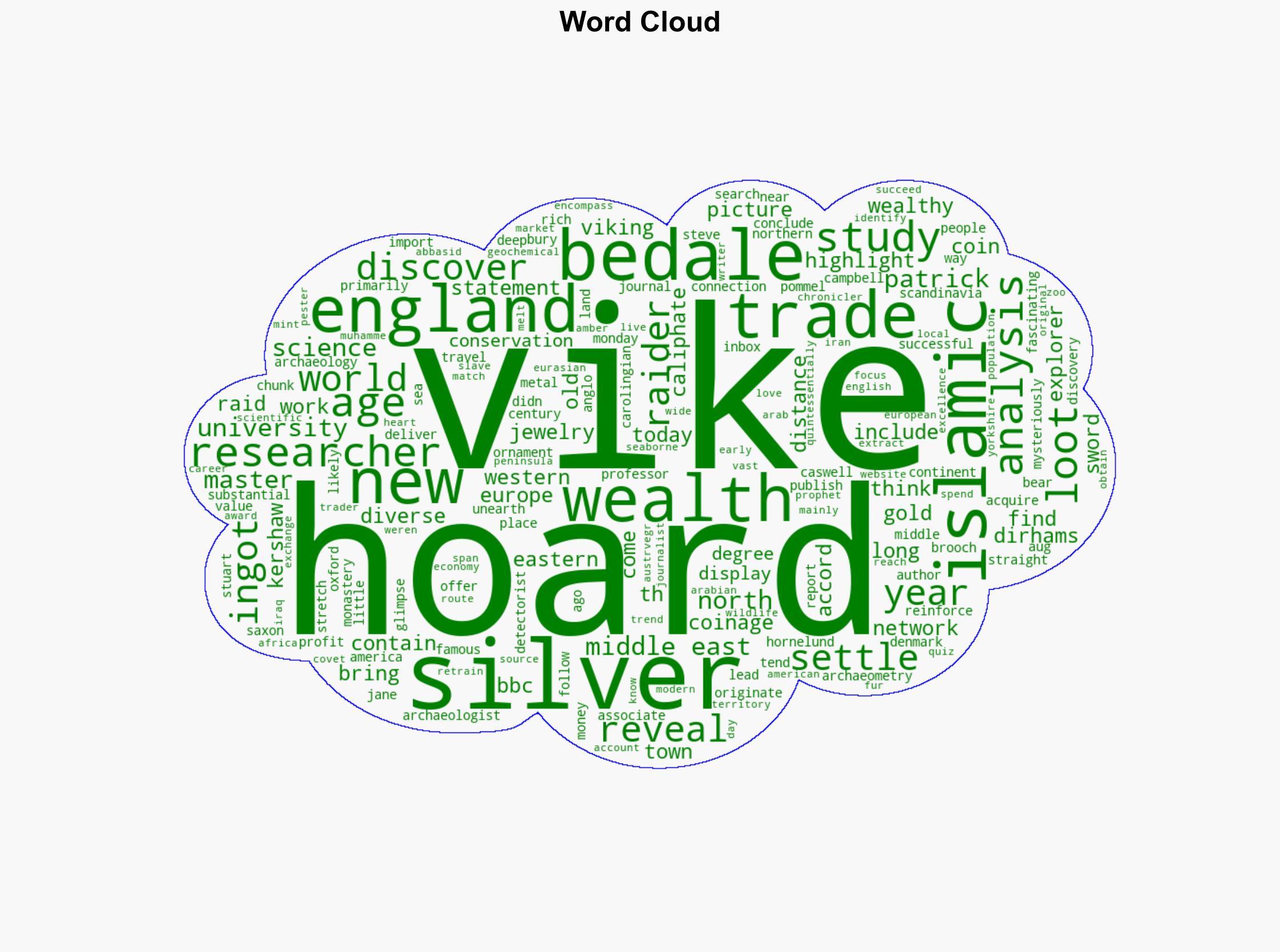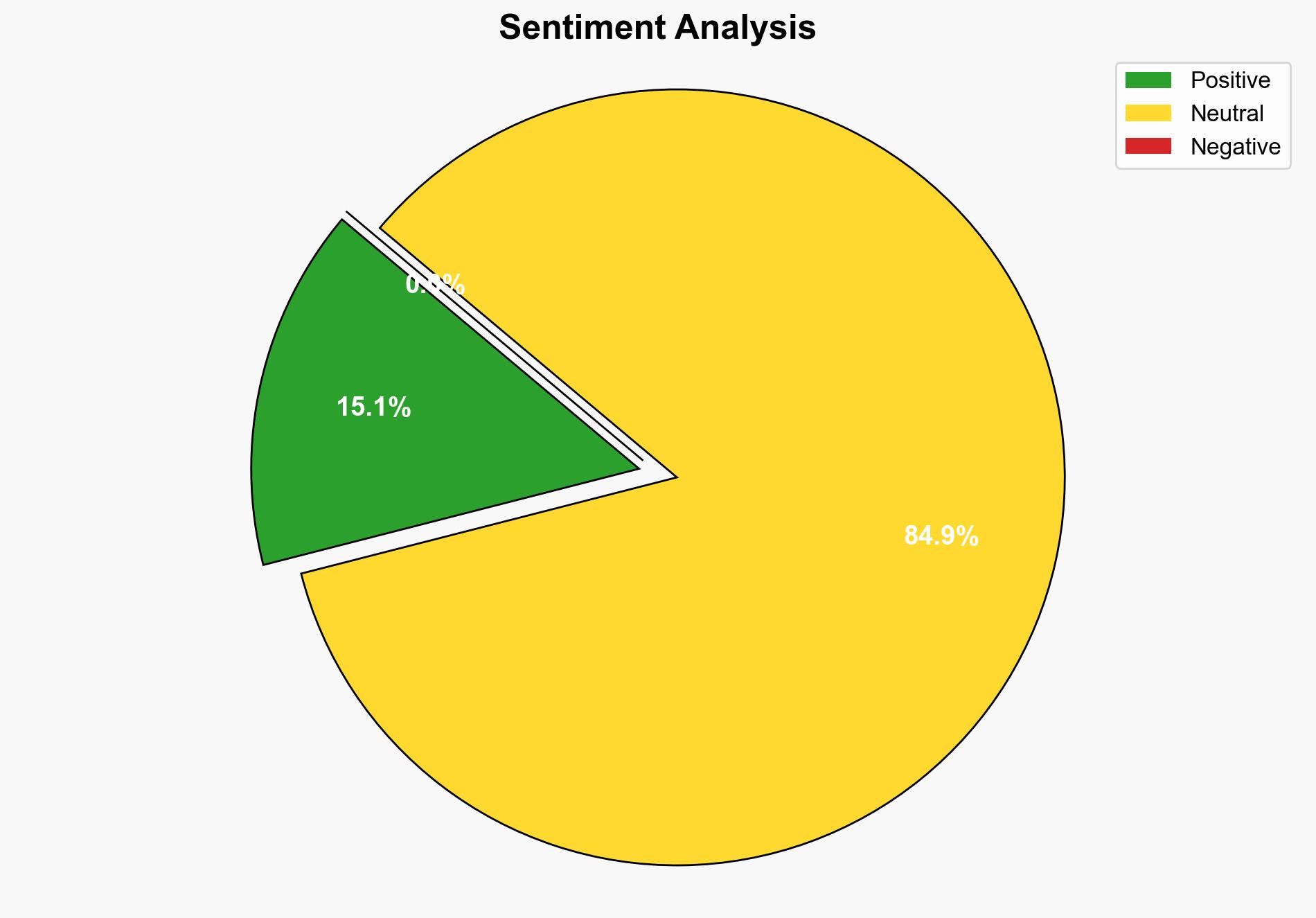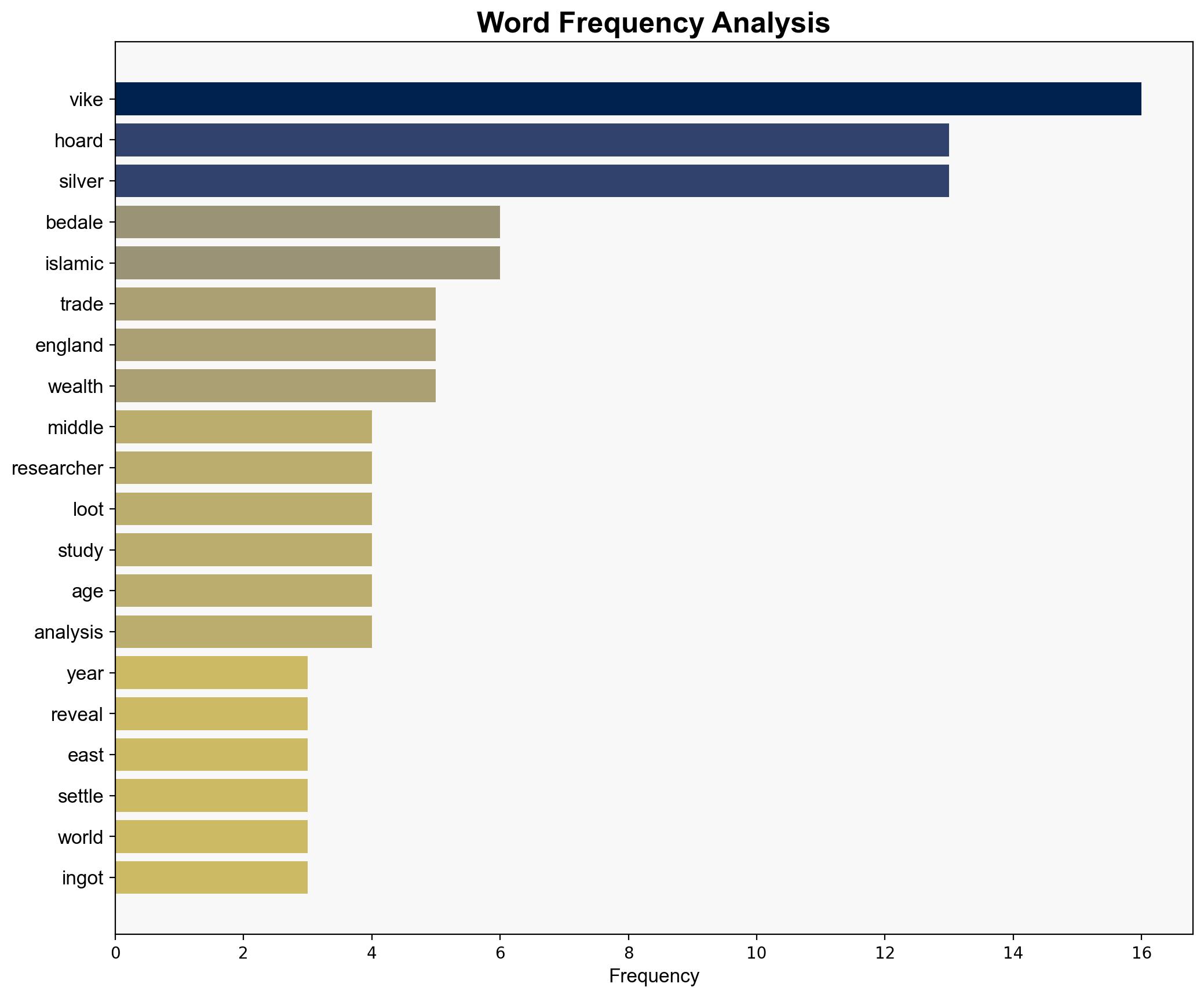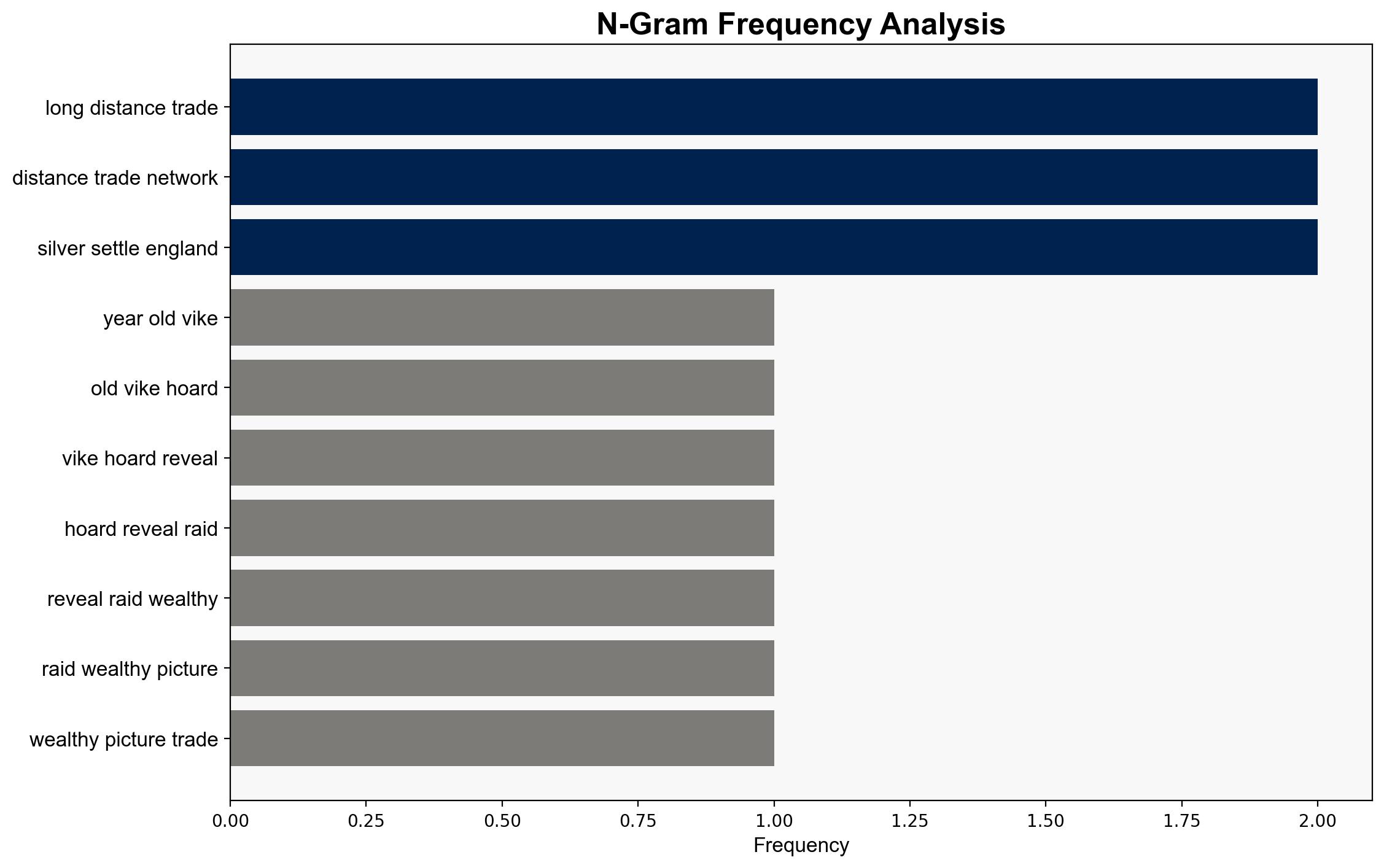1100-year-old Viking hoard reveals raiding wealthy only ‘part of the picture’ they traded with the Middle East too – Live Science
Published on: 2025-08-13
Intelligence Report: 1100-year-old Viking hoard reveals raiding wealthy only ‘part of the picture’ they traded with the Middle East too – Live Science
1. BLUF (Bottom Line Up Front)
The analysis suggests that the Vikings were not solely raiders but also engaged in extensive trade networks, particularly with the Middle East, as evidenced by the Bedale hoard. The hypothesis that Vikings were both raiders and traders is better supported. Confidence level: High. Recommended action: Further research into Viking trade routes and their economic impact on contemporary societies.
2. Competing Hypotheses
1. **Hypothesis A**: Vikings primarily accumulated wealth through raiding, with trade being a secondary activity.
2. **Hypothesis B**: Vikings were equally engaged in raiding and trading, with significant economic interactions with the Middle East.
Using the Analysis of Competing Hypotheses (ACH) 2.0, Hypothesis B is better supported. The presence of Middle Eastern silver coins in the Bedale hoard suggests a robust trade network, challenging the traditional view of Vikings as primarily raiders.
3. Key Assumptions and Red Flags
– **Assumptions**: The analysis assumes that the presence of Middle Eastern coins directly indicates trade rather than alternative means of acquisition, such as indirect trade or looting.
– **Red Flags**: The potential for cognitive bias exists if researchers overemphasize trade based on limited archaeological evidence. The absence of comprehensive records from the Viking era may lead to speculative conclusions.
4. Implications and Strategic Risks
The findings imply that Viking trade networks were more extensive than previously understood, potentially influencing economic and cultural exchanges across Europe and the Middle East. This could reshape historical narratives and impact cultural heritage tourism. Strategic risks include misinterpretation of historical data leading to skewed perceptions of Viking influence.
5. Recommendations and Outlook
- Conduct interdisciplinary studies combining archaeology, history, and economics to map Viking trade routes comprehensively.
- Scenario-based projections:
- Best: Enhanced understanding of Viking trade leads to increased cultural heritage tourism and academic collaboration.
- Worst: Misinterpretation of data results in historical inaccuracies and diminished academic credibility.
- Most Likely: Continued research refines the understanding of Viking economic activities, balancing the raider-trader narrative.
6. Key Individuals and Entities
– Jane Kershaw: Lead author and associate professor specializing in Viking Age archaeology.
– Stuart Campbell and Steve Caswell: Discoverers of the Bedale hoard.
7. Thematic Tags
historical analysis, trade networks, Viking studies, cultural heritage





